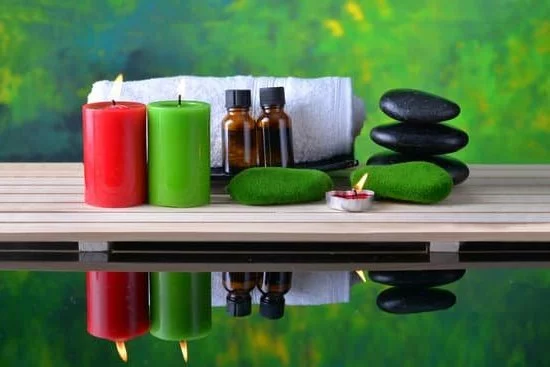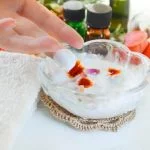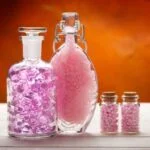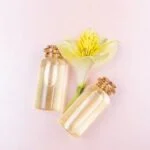Are you looking for a natural way to uplift your mood, enhance focus, or ease headaches? Look no further than peppermint aromatherapy.
In this article, we will delve into the world of peppermint essential oil and its numerous benefits for physical and mental well-being. From understanding what peppermint essential oil is and how it works, to exploring different methods of making peppermint aromatherapy, and even providing DIY recipes for relaxation, focus, and energy boost – this article will be your comprehensive guide to all things peppermint aromatherapy.
Peppermint aromatherapy has been used for centuries to promote overall wellness and treat various ailments. With its refreshing scent and invigorating properties, it is a popular choice for those seeking natural remedies. Throughout this article, we will also address safety precautions and guidelines for using peppermint aromatherapy, as well as tips on where to source high-quality peppermint essential oil for your blends.
Whether you’re new to aromatherapy or a seasoned enthusiast, incorporating peppermint aromatherapy into your daily life can bring about a multitude of benefits. So join us as we uncover the wonders of peppermint essential oil and learn how to make the most out of this versatile ingredient for a healthier and more balanced lifestyle.
Understanding Peppermint Essential Oil
Peppermint essential oil is derived from the peppermint plant, which is a hybrid of water mint and spearmint. It is known for its invigorating and refreshing aroma, making it a popular choice for aromatherapy. The oil contains menthol, menthone, and other active compounds that contribute to its therapeutic properties. When inhaled, these compounds interact with the olfactory system and provide various benefits to the body and mind.
Benefits of Peppermint Aromatherapy
- Relief from headaches and migraines
- Improved focus and concentration
- Alleviation of nausea and indigestion
- Reduction of stress and anxiety
- Enhanced respiratory function
How Peppermint Aromatherapy Works
Peppermint essential oil works through inhalation, as the aromatic compounds are absorbed into the bloodstream through the lungs. Once in the bloodstream, these compounds can exert their therapeutic effects on various systems in the body, such as the nervous system, digestive system, and respiratory system. Additionally, inhaling peppermint essential oil can stimulate the limbic system in the brain, which plays a role in emotions, memory, and arousal.
Tips for Using Peppermint Essential Oil Safely
- Dilute peppermint essential oil before applying it to the skin to avoid irritation.
- Avoid using peppermint aromatherapy around young children or pets without proper guidance from a healthcare professional.
- If you have specific health conditions or are pregnant or nursing, consult with a qualified aromatherapist or healthcare provider before using peppermint aromatherapy.
Understanding what peppermint essential oil is and how it works is crucial for safely incorporating it into your aromatherapy practice. By being aware of its benefits and following safety precautions, you can fully enjoy the refreshing and invigorating effects of peppermint aromatherapy.
Safety Precautions and Guidelines for Using Peppermint Aromatherapy
Peppermint aromatherapy offers a wide range of benefits, from relaxation to improved focus and energy boost. However, it’s important to understand the safety precautions and guidelines for using peppermint essential oil to ensure a safe and effective experience. Here are some important precautions to keep in mind when using peppermint aromatherapy:
- Dilution: Due to its potency, peppermint essential oil should always be diluted before direct application to the skin. It is recommended to mix 1-2 drops of peppermint oil with a carrier oil such as coconut or almond oil.
- Avoiding Sensitive Areas: When applying diluted peppermint oil topically, it’s crucial to avoid sensitive areas such as the eyes, mucous membranes, and any broken or irritated skin.
- Allergies and Sensitivities: Individuals with allergies or sensitivities to menthol should be cautious when using peppermint essential oil. It’s advisable to perform a patch test before widespread use.
- Internal Use: Peppermint essential oil should not be ingested without the guidance of a healthcare professional. Internal use can lead to adverse reactions if not used properly.
In addition to these safety precautions, there are also guidelines for using peppermint aromatherapy effectively:
- Room Ventilation: When using a diffuser for peppermint aromatherapy, ensure that the room is well-ventilated to prevent overexposure.
- Duration of Use: It’s important to limit the duration of exposure when using peppermint aromatherapy, especially in enclosed spaces. 30-60 minutes at a time is generally recommended for diffuser use.
- Consistency: For individuals with specific health concerns or conditions, consistent and moderate use of peppermint aromatherapy may provide greater benefits than occasional intense use.
Understanding these safety precautions and guidelines will allow individuals to enjoy the benefits of peppermint aromatherapy while minimizing any potential risks or adverse reactions. By following these recommendations, users can create a safe and enjoyable experience with this invigorating essential oil.
Different Methods of Making Peppermint Aromatherapy
Peppermint aromatherapy can be a wonderful way to experience the refreshing and invigorating benefits of this essential oil. One of the most effective ways to enjoy this form of aromatherapy is through the use of diffusers, inhalers, and sprays. These methods each have their own unique benefits and can be easily incorporated into your daily routine.
Diffusers are a popular choice for peppermint aromatherapy as they disperse the essential oil into the air, allowing you to breathe in its therapeutic aroma. There are different types of diffusers available, including ultrasonic, nebulizing, and heat diffusers.
Ultrasonic diffusers use water and essential oils to create a fine mist, while nebulizing diffusers break down the essential oil into small particles without the use of heat or water. Heat diffusers use low levels of heat to aid in dispersing the essential oil.
Inhalers are another convenient method for experiencing peppermint aromatherapy on-the-go. These small, portable devices allow you to inhale the aroma of peppermint essential oil directly through your nostrils. Inhalers are perfect for moments when you need a quick pick-me-up or relief from symptoms such as headaches or nausea.
Lastly, sprays provide a simple and effective way to enjoy the benefits of peppermint aromatherapy throughout your home or workspace. By combining peppermint essential oil with water or witch hazel in a spray bottle, you can create a refreshing mist that can be used on linens, upholstery, curtains, and even as a room spray.
| Method | Description |
|---|---|
| Diffusers | Disperses essential oil into the air for inhalation |
| Inhalers | Portable devices for direct inhalation of essential oils |
| Sprays | Creates a refreshing mist for use on linens or in rooms |
DIY Peppermint Aromatherapy Recipes
Peppermint Aromatherapy Blends for Relaxation
One popular blend for relaxation using peppermint essential oil is combining it with lavender and chamomile. This combination creates a soothing and calming scent that can help reduce stress and promote relaxation.
To make this blend, simply mix 5 drops of peppermint essential oil, 5 drops of lavender essential oil, and 3 drops of chamomile essential oil in a diffuser or inhaler. You can also dilute these oils with a carrier oil, such as almond or coconut oil, and apply it to your skin for a relaxing massage.
Peppermint Aromatherapy Blends for Focus
If you’re looking to enhance your focus and concentration, you can create a peppermint aromatherapy blend using rosemary and lemon essential oils. The invigorating scent of peppermint combined with the uplifting properties of rosemary and lemon can help stimulate your mind and improve mental clarity.
To make this blend, mix 4 drops of peppermint essential oil, 3 drops of rosemary essential oil, and 3 drops of lemon essential oil in a diffuser or spray bottle. Use this blend during work or study sessions to stay focused and alert.
Peppermint Aromatherapy Blends for Energy Boost
For an energizing and refreshing aroma, consider creating a blend using peppermint, eucalyptus, and orange essential oils. The cooling effect of peppermint combined with the revitalizing properties of eucalyptus and the uplifting scent of orange can help boost your energy levels naturally.
To make this blend, combine 6 drops of peppermint essential oil, 4 drops of eucalyptus essential oil, and 4 drops of orange essential oil in a diffuser or inhaler. Use this blend in the morning or whenever you need an extra pick-me-up throughout the day.
These DIY peppermint aromatherapy recipes are simple to make at home and can be customized to suit your preferences. Whether you’re looking to relax, improve focus, or boost energy, incorporating these blends into your aromatherapy routine can provide various benefits for both your physical and mental well-being.
Where to Source High-Quality Peppermint Essential Oil for Aromatherapy
Peppermint essential oil is a popular choice for aromatherapy due to its refreshing and invigorating properties. When looking for high-quality peppermint essential oil for aromatherapy, it’s important to source it from reputable suppliers that offer pure and natural products. Many health food stores, specialty aromatherapy shops, and online retailers carry a wide range of essential oils, including peppermint oil.
One important factor to consider when sourcing peppermint essential oil is its purity. Look for oils that are labeled as 100% pure, therapeutic-grade, or steam-distilled. These designations indicate that the oil is free from synthetic additives and has been produced using high-quality processes. Additionally, choosing organic peppermint essential oil ensures that it has been sourced from plants grown without the use of pesticides or other harmful chemicals.
It’s also important to consider the reputation of the supplier when purchasing peppermint essential oil for aromatherapy. Reading customer reviews and seeking recommendations from experienced aromatherapy practitioners can help you identify trustworthy sources. Some well-known brands in the aromatherapy industry offer third-party testing and certifications to ensure the quality and purity of their essential oils.
When using peppermint essential oil for aromatherapy, always follow the recommended guidelines for dilution and usage to ensure safety and effectiveness. By sourcing high-quality peppermint essential oil from reputable suppliers, you can fully embrace the benefits of this versatile oil in your aromatherapy practices.
| Where to Source High-Quality Peppermint Essential Oil | Considerations |
|---|---|
| Health food stores | Check for 100% purity and organic options |
| Specialty aromatherapy shops | Look for reputable suppliers with positive customer reviews |
| Online retailers | Research brands offering third-party testing and certifications |
Incorporating Peppermint Aromatherapy Into Daily Life
Creating a Calming Environment
One of the simplest ways to incorporate peppermint aromatherapy into your daily life is by using a diffuser. Adding a few drops of peppermint essential oil to a diffuser can create a calming and refreshing environment in any room. Whether you’re working from home, practicing yoga, or simply unwinding after a long day, the soothing scent of peppermint can help promote relaxation and ease stress.
Boosting Energy and Focus
If you’re looking for an energy boost or need help staying focused throughout the day, incorporating peppermint aromatherapy into your workspace can be beneficial. Consider using a portable inhaler infused with peppermint essential oil to help keep you alert and attentive during work or study sessions. Additionally, creating a DIY peppermint spray with water and essential oil can provide an instant burst of energy when you need it most.
Enhancing Self-Care Rituals
Incorporating peppermint aromatherapy into self-care rituals can add an extra layer of relaxation and rejuvenation. From adding a few drops of peppermint essential oil to your bathwater for a refreshing soak to creating your own blend for massage oils and lotions, there are numerous ways to enhance your self-care routine with the invigorating scent of peppermint.
By integrating these tips and tricks into your daily life, you can fully embrace the benefits of peppermint aromatherapy for relaxation, focus, and an overall sense of well-being.
Conclusion
In conclusion, peppermint aromatherapy offers a wide range of benefits that can positively impact both physical and mental well-being. From its ability to ease headaches and nausea to its energizing and refreshing effects, peppermint essential oil is a versatile and valuable addition to any aromatherapy routine. By understanding the properties and safety guidelines of peppermint essential oil, individuals can confidently incorporate this aroma into their daily lives.
One of the most important aspects of peppermint aromatherapy is understanding how to use it safely and effectively. By following the recommended guidelines for dilution, inhalation, and topical application, individuals can avoid potential skin irritation or other adverse reactions. Additionally, sourcing high-quality peppermint essential oil from reputable suppliers is crucial in ensuring its effectiveness in aromatherapy blends and recipes.
For those interested in incorporating peppermint aromatherapy into their daily routine, there are various methods and DIY recipes to explore. Whether it’s through diffusers, inhalers, or sprays, individuals can tailor their use of peppermint essential oil to suit their specific needs for relaxation, focus, or an energy boost. With a little experimentation and creativity, anyone can discover the invigorating effects of peppermint aromatherapy and enjoy its refreshing scent in their home or workspace.
Frequently Asked Questions
Can I Make My Own Peppermint Essential Oil?
Yes, you can make your own peppermint essential oil at home. The process involves crushing fresh peppermint leaves to release the oil, then using a distillation method to extract the essential oil.
How Do You Extract Essential Oils From Peppermint?
Essential oils from peppermint can be extracted through steam distillation. This process involves placing the fresh peppermint leaves in a container and passing steam through them. The steam helps release and carry the essential oil out of the plant material, which is then collected and separated from the water.
How Do You Use Peppermint Oil for Aromatherapy?
Peppermint oil can be used for aromatherapy in various ways. It can be diffused in a room using a diffuser, applied topically when diluted with a carrier oil, or even inhaled directly from the bottle for quick relief from nausea or headaches. Its invigorating scent makes it popular for boosting energy and reducing feelings of fatigue or stress.

Are you looking for a natural way to improve your health and wellbeing?
If so, aromatherapy may be the answer for you.





